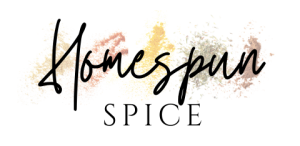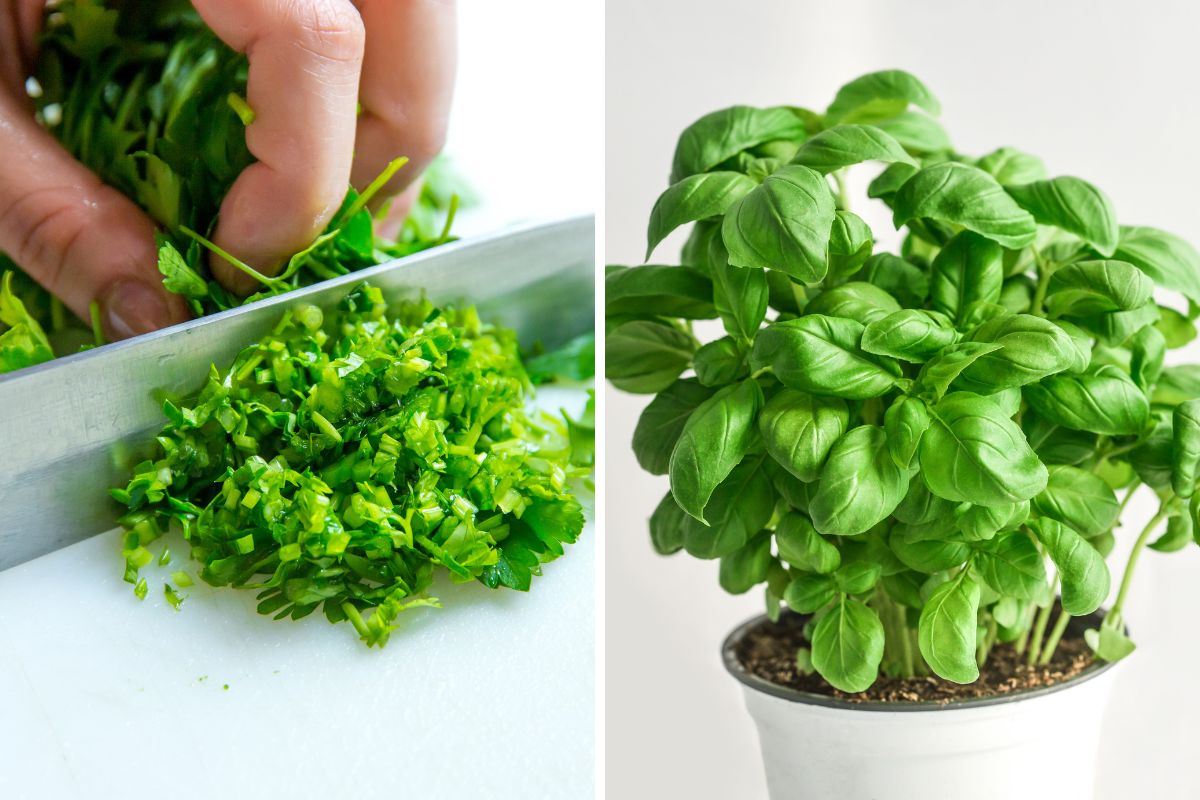Parsley and basil are two of the most popular herbs in the culinary world. Parsley has a herbaceous, bright, fresh flavor with hints of bitterness and pepper. It’s a popular garnish in Middle Eastern stews and soups. Meanwhile, basil boasts a delicate mix of pepper, anise, and licorice. It’s the go-to herb when creating tomato-based sauces for pizza and pasta.
Table of Contents
What is parsley?
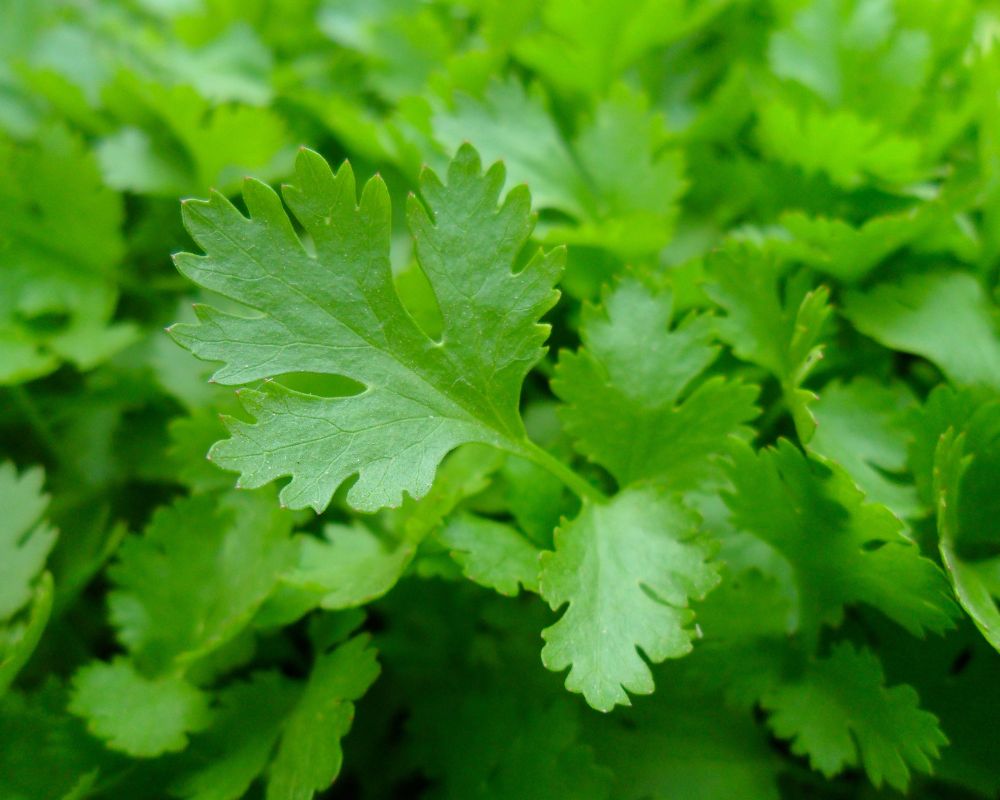
Parsley (Petroselinum crispum) comes from the Apiaceae family. It has a bright, grassy flavor with a subtly peppery and bitter background.
The plant can be annual or biennial (depending on the climate) and has tender leaves and soft stalks. It also has different varieties and types of parsley:
- Italian parsley or flat lead parsley packs a stronger flavor
- Curly leaf parsley is milder
- Hamburg parsley tastes like a cross between celery roots and parsnips
- Japanese parsley is reminiscent of celery with hints of bitterness
What is basil?
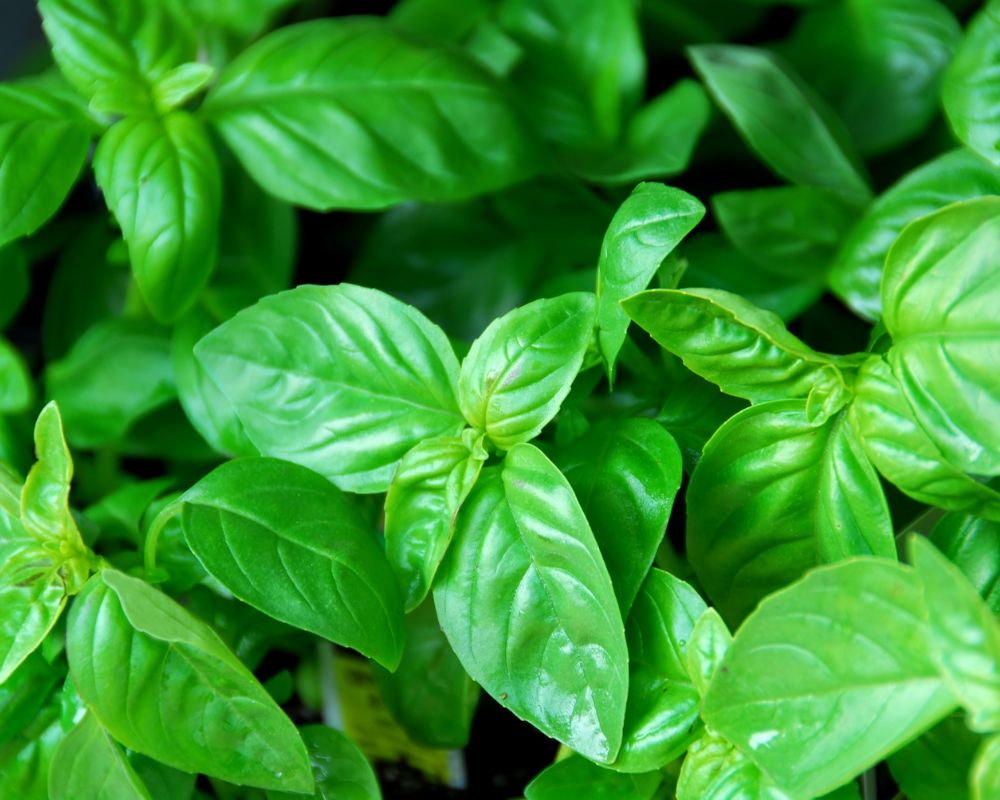
Basil (Ocimum basilicum) is often called the “king of herbs.” Belonging to the Lamiaceae or mint family, the tender basil plant gives that cool freshness with notes of pepper, anise, and licorice.
Grown as an annual or perennial plant, it offers a great balance between savory and sweet. It also comes in different varieties.
Sweet basil is common in your grocery store or favorite Amazon shop. It’s sweet and peppery, while Thai basil has a bold spice and licorice flavor.
On the other hand, holy basil is sweet and has an anise-like quality.
What is the difference between parsley and basil?
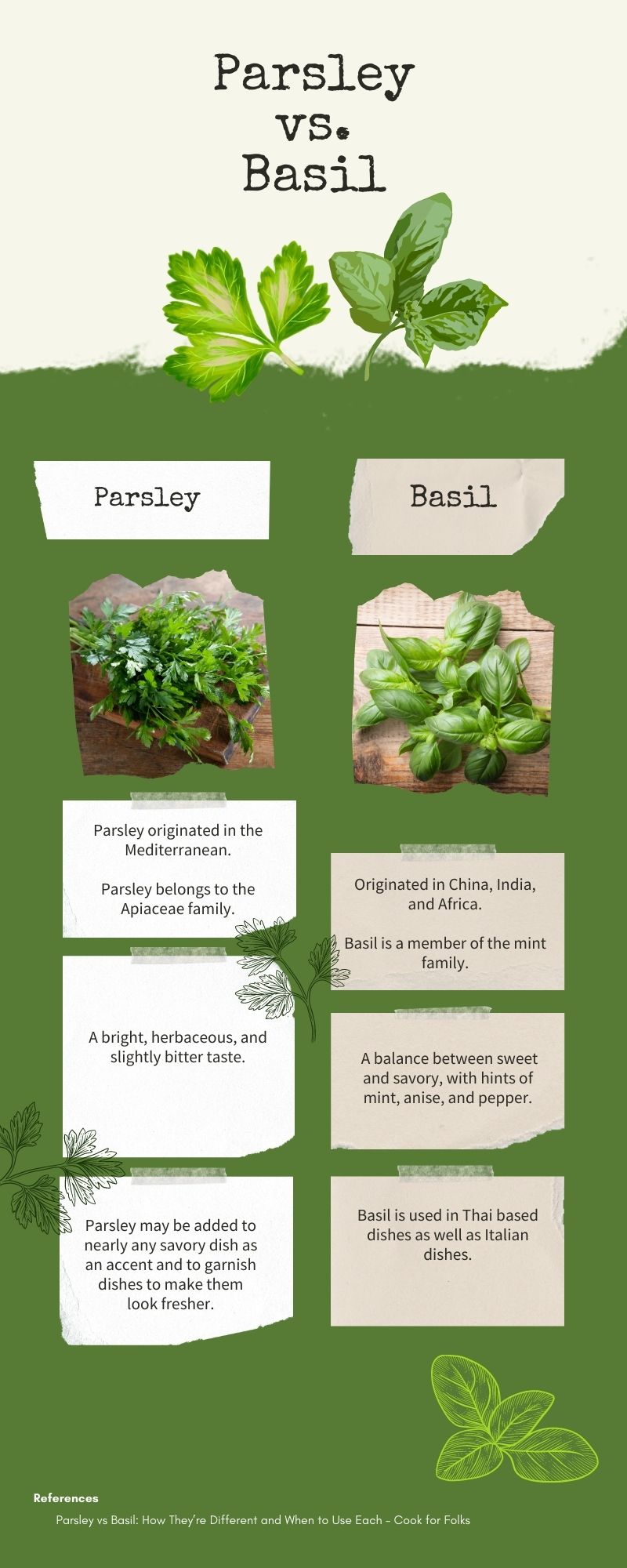
If you’re not well-versed in using these fresh herbs, here’s a rundown of their key differences.
Origin
Basil is native to India but has also found its way to other Asian countries such as Indonesia, Nepal, China, Vietnam, Malaysia, Thailand, and Taiwan.
Parsley originated from the central and eastern Mediterranean.
These sun-loving herbs come from two different botanical families. Basil is from the Lamiaceae, with mint as its most prominent cousin. On the other hand, parsley is part of the Apiaceae family, also home to fennel, celery, anise, and carrot.
Appearance
Both fresh parsley and basil add that refreshing green color to culinary creations. However, basil leaves can also come in red wine and purple colors. They are also thicker, with jagged but smooth edges, and are elliptical. Meanwhile, parsley leaves are broader and have pointy edges.
When dried, parsley’s green color becomes muted but still has that warm appeal. Dried basil becomes dark green to dark brown.
Flavor
Parsley has a different flavor profile from basil. This Mediterranean-originating herb has a bright, grassy, and fresh flavor with subtle peppery and bitter undertones.
In contrast, basil is minty with a mix of anise, clove, and licorice.
Applications
You may know parsley as a garnish, but this spice is more than that. Parsley is widely used in Middle Eastern dishes (soups, stews, sauces, salsas, and marinades). It’s also a key ingredient in some French and South American dishes — giving recipes that aromatic and herbal appeal.
Basil is considered more versatile than parsley. It’s a chef’s favorite in Italian and Asian cuisines and can elevate the flavor and aroma of both sweet and savory dishes. The most common recipes are pizza, pasta, and sauces.
Shelf life
In general, fresh herbs will last about 5 to 7 days. To reach this period, you must store them at room temperature. You can substantially extend the lifespan of herbs like parsley and basil when you get their dried version. Dried herbs will last about 1 to 3 years when away from sunlight.
Form
Parsley and basil are available in both whole and dried-leaf versions. You can also find ground (dried) herbs in grocery stores or grind one yourself.
Generally, dried counterparts have a spicier and deeper flavor.
Comparison Table
| Parsley | Basil | |
| Origin | Leaves of a plant hailing from the Apiaceae family, which thrives in the Mediterranean region (central and eastern) | Leaves of a plant belonging to the Lamiaceae family, which is native to India |
| Appearance | Green, purple, and red wine in color, leaves are elliptical with jagged yet smooth edges | Green, leaves are pointed and are broader |
| Flavor | Has a bright, fresh, grassy, and peppery flavor | Minty with a medley of pepper, anise, and licorice |
| Applications | A staple ingredient in Middle Easter cuisine, including marinades, salsas, soups, and stews | Popularly used in Italian cooking as well as in Asian cuisine, works well with sweet and savory recipes |
| Shelf life | 5 to 7 days when fresh at room temperature, 1 to 3 years when dried and stored in a cool, dark place | 5 to 7 days when fresh at room temperature, 1 to 3 years when dried and stored in a cool, dark place |
| Form | Whole leaves (fresh and dried) and ground | Whole leaves (fresh and dried) and ground |
What are the benefits of using basil instead of parsley?
Basil is the more versatile ingredient of the two. For example, you can use it to make sweet recipes. Furthermore, it has a standout flavor.
However, both boast health benefits and contain vitamins, minerals, essential oils, and antioxidants.
Basil has more calcium, magnesium, copper, and less sodium. In contrast, parsley has more iron, potassium, zinc, Vitamin A, Vitamin C, Vitamin K, and beta-carotene.
Both herbs can also help people battling heart disease and hypertension.
When to use parsley?
You will likely use parsley in Middle Eastern cuisine: it’s seen on salads, soups, and hummus and used as a seasoning for ground meat dishes. In French cuisine, it’s also one of the ingredients for the so-called French bouquet garni and other herbs.
Combine olive oil, red wine, garlic, and fresh parsley to create chimichurri, a South American sauce that can jazz up various dishes — from grilled sweet potatoes to salmon and steak salad.
When to use basil?
Chefs use basil to add distinct flavors to various dishes, including appetizers, stews, rice-served dishes, and desserts.
It’s primarily known as a key ingredient in pesto but is also essential when cooking tomato-based sauces that can be used in pasta and beyond. Italians also use basil to create a balsamic herb to dress their Caprese salad. In Thailand, it’s part of popular dishes such as Thai eggplant curry and Thai basil chicken.
If you want to introduce more depth of flavor to cocktails, basil is a great addition. It pairs well with berry and citrus flavors.
Can parsley and basil go together?
Basil and parsley are herbs that go together — plus, they also work well with other culinary seasonings such as oregano, rosemary, mint, cilantro, and coriander. Popular herb-laden recipes include the Caprese salad, grilled chicken, and seared steak tartare.
Can you substitute basil for parsley?
You can substitute basil for parsley, especially in Italian cooking. Though mint-like, it doesn’t have that overpowering taste. It will also be ideal to complement salads, meat, and fish dishes.
You can also do vice versa and use basil as a swap for parsley. Use a 1:1 ratio, but if you’re substituting a dried herb with a fresh one, use 3 parts fresh to 1 part dried because, as stated, dried herbs have a stronger flavor.
